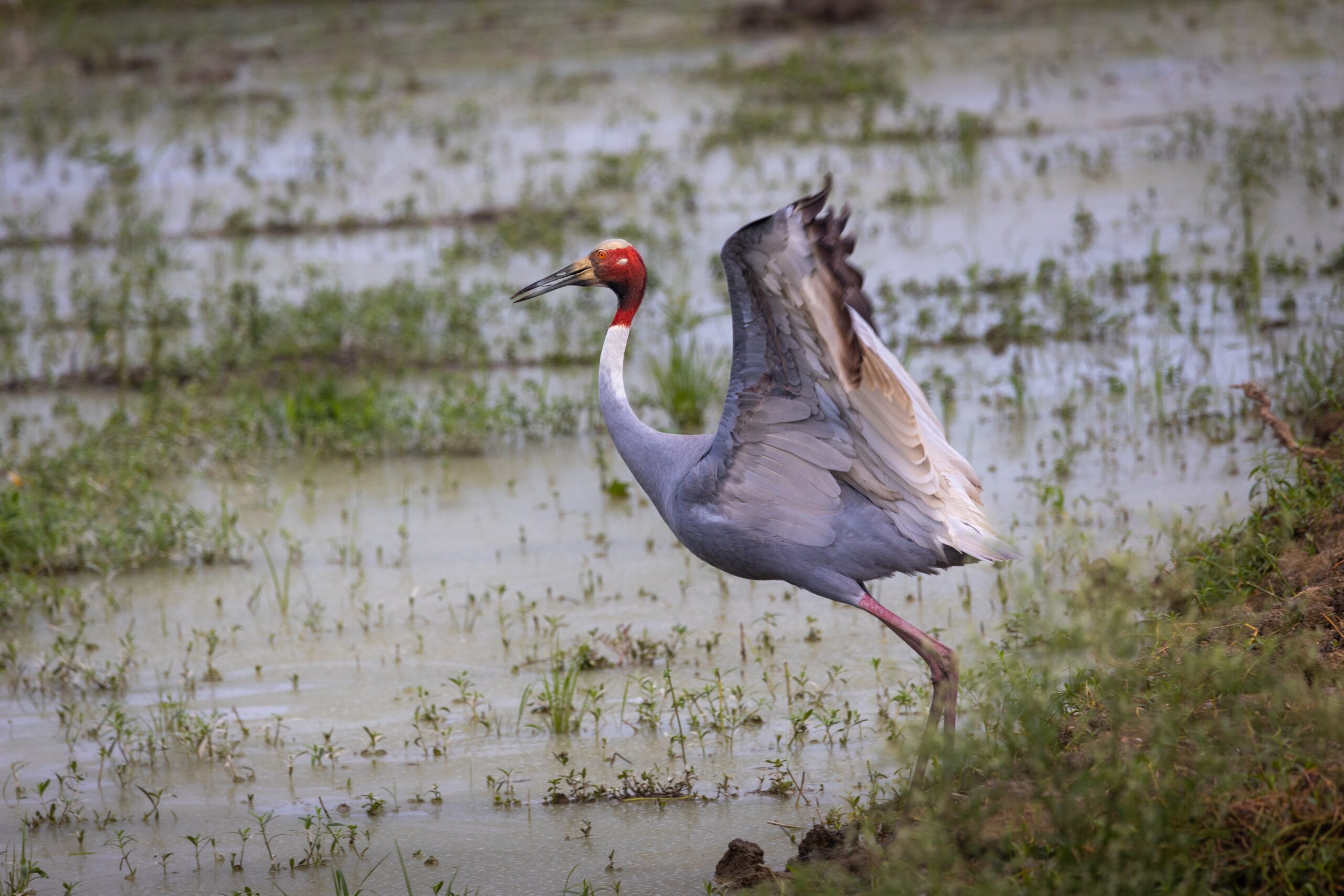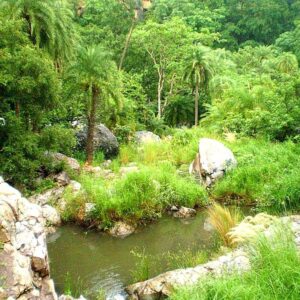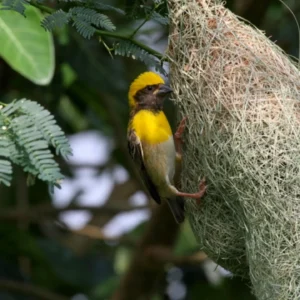Sariska Tiger Reserve in Alwar, Rajasthan, is primarily a tiger reserve, but it is also a wonderful destination for bird watchers. Anyone interested in bird watching will find this location to be a paradise. There are around two hundred bird species that make this reserve their home. During the peak season, you can hear the beautiful songs of a variety of birds.
The sanctuary also boasts a thriving avian life. Large flocks of peacocks, their tail feathers spread wide in that iconic shimmering “dance,” can be seen in the late summer and during the monsoon months. Peafowl, Great Indian Horned Owls, Red Jungle Fowl, Spur Fowls, White Breasted Kingfishers, Golden Backed Woodpeckers, Quails, Partridges, Parakeets, Sandgrouse, Tree Pies, Crested Serpent Eagles, Drongos, Sunbirds, and Vultures are just a few of the bird species that may be seen in the sanctuary. On your visit to appreciate and experience all that nature has to offer, stay with us at our Resort in Sariska to experience a lovely vacation and the bliss of nature.
Different Species of Birds in Sariska Tiger Reserve

Common Pochard
The common pochard, or Aythya ferina, is a diving duck of the family Anatidae that measures in at around the same size as a mallard. It has a massive population, a wide range during the mating season, and a significant migratory population in the winter. The population has declined rapidly across much of its range, and this trend is expected to continue; as a result, the population is considered to be in a Vulnerable state.
Painted Spurfowl
Peninsular India is home to the majority of the world’s painted spurfowl population (Galloperdix lunulata). They like the more rugged environments of mountain ridges and bushes and hills. Painted spurfowl, or Galloperdix lunulata, gets its name from its colourful plumage. These species have brilliant patterns of colour and white spots. Although the painted spurfowl (Galloperdix lunulata) is primarily a herbivore, it will occasionally eat insects and molluscs, making it an omnivore.
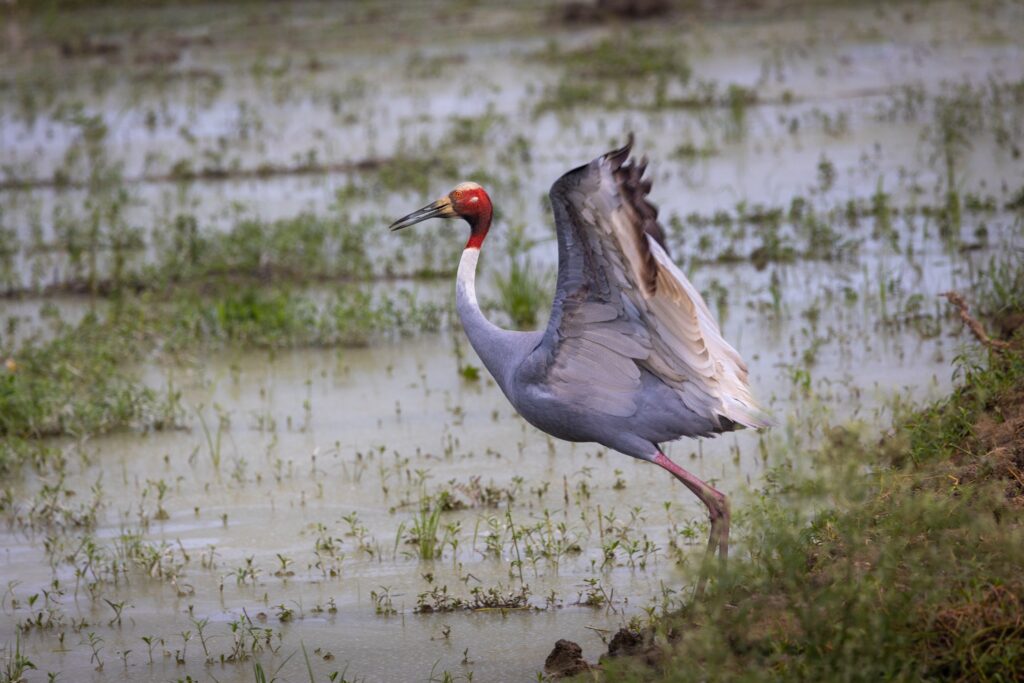
Sarus Crane
The Sarus Crane is 152-156 cm in height and has a 240 cm wingspan, making it the world’s largest flying bird. The adult has a predominantly grey body, a whiter mid-neck and tertials, a predominantly nude red head and upper neck (brighter while breeding), blackish primaries but primarily grey secondaries, and reddish legs that are bright when breeding and pale outside of breeding season.
Painted Stork
Large wading birds known as painted storks were uncovered in the grasslands of tropical Asia’s wet regions. Adults may recognise one another by their distinctive pink aviation feathers. These gorgeously plumaged birds resemble ibises due to their massive golden beaks and down-curved pointers. The painted stork is most often seen in coastal locations, but it also frequents wetlands in inland regions.
Black-necked Stork
In between the two extremes of black and white. These two hues come together beautifully in the feather of the Ephippiorhynchus asiaticus, more commonly known as the black-necked stork. Although the name only refers to the necks, the secondary flight feathers, tail, and head of these birds are also a dark black colour that is brought to life by a stunning emerald and purple sheen.

Dalmatian Pelican
The Dalmatian pelican is the largest member of the pelican family, and it is also one of the largest and heaviest living birds. It shares this distinction with the kori, the significant bustard, and the amazing swan. During the breeding season, this enormous pelican gets its distinctive silvery-white plumage, which stands out against its orange-red rubbery pouch beneath its bill and its purple-to-yellow exposed skin around its eyes. It has a broad silver arc of feathers on its back. Its pouch turns yellow during the breeding season, and in the winter its feathers lose their silvery sheen and appear white or grey.
Black-headed Ibis
Practically a wetland lineage of wading birds, the black-headed ibis is furthermore named the Oriental white ibis, the black-necked ibis, or the Indian white ibis. The bird is discovered in nature as well as in man-made territories. It has harmonized well with living in man-made environments. These waterbirds are discovered close to both perennial and seasonal water rifts. It is scattered throughout the map of South Asia on the planet from India to the west to Japan on the far side of the East. The bird is migratory by character.
Oriental Darter
A member of the family Anhingidae, the Oriental darter (Anhinga melanogaster) is a fish found in Southeast Asia. It is found in the waters of the Indian Subcontinent, Myanmar, Thailand, and Indonesia. Depending on how you measure it, the Oriental darter can be anywhere from 85 to 100 cm in length and weigh anywhere from 1,000 to 1,800 grammes. The wingspan is between 45 and 51 inches/115 and 130 centimetres. The length of the bill is between 7 and 8 centimetres. These birds can sit on a rock or a tree trunk and dry their wings by spreading them out.
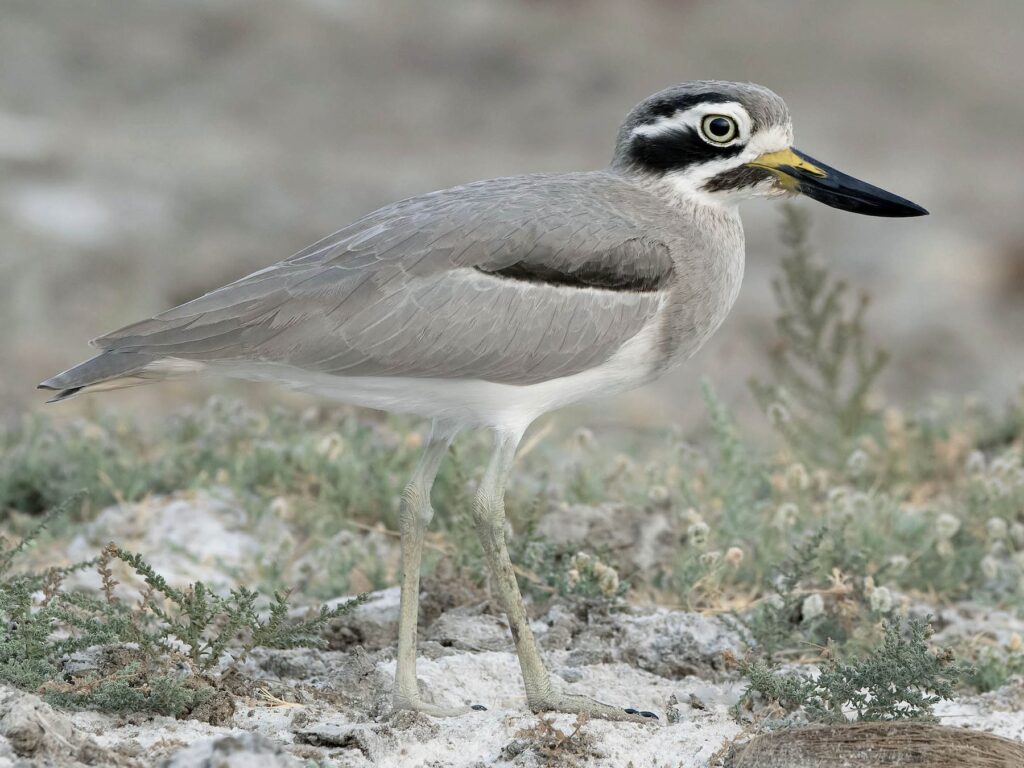
Great Thick-knee
The family Burhinidae includes stone curlews, dikkops, and thick knees like Esacus Recurvirostris. Esacus Recurvirostris, commonly known as the great thick-knee, is a massive stone curlew that grows to be about 50 to 55 centimetres in length and weighs about 800 grams. There is a 10-centimetre (30 centimetres) difference in wing span. The upper parts of these birds are a drab greyish sand colour. Clusters of black and white can be seen on the wing coverts. The primary colours have a few white spots here and there. There is a white V at the jaw and a white throat. The breasts are a drab brown colour. The underbelly is pure white

